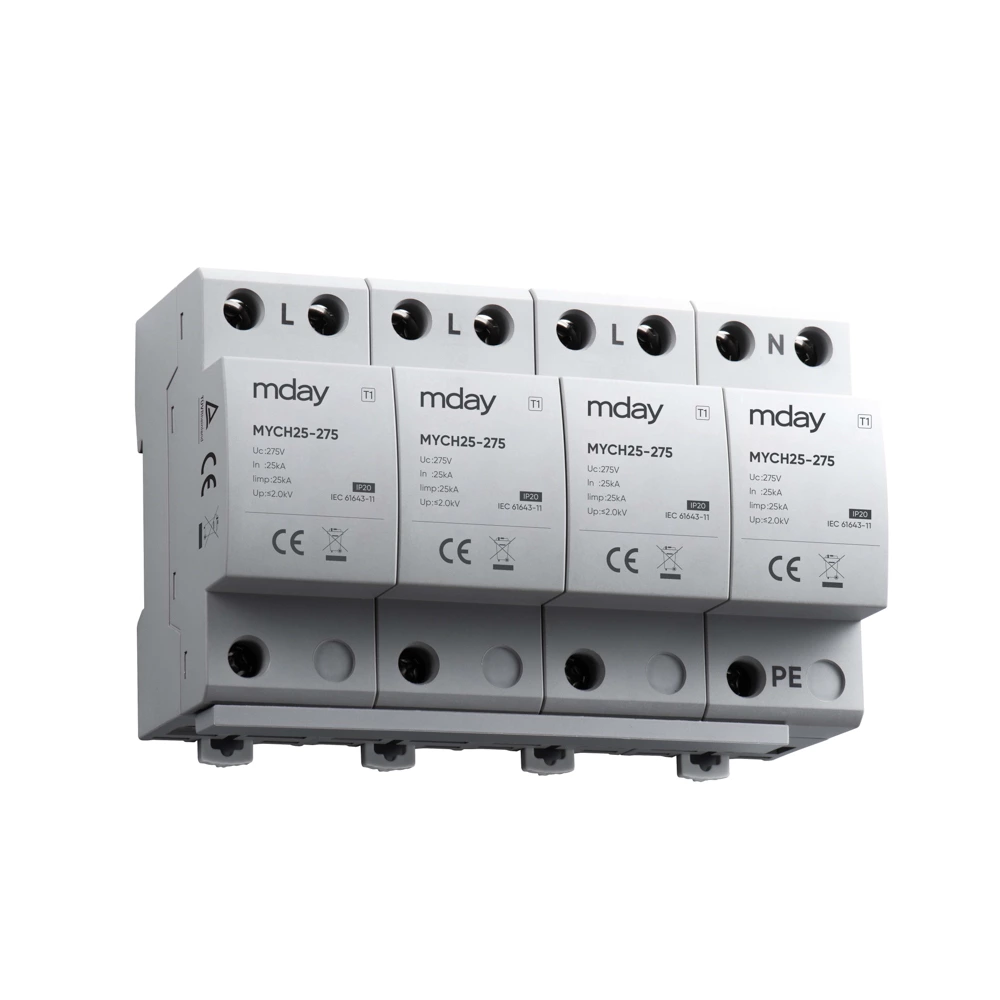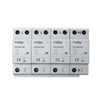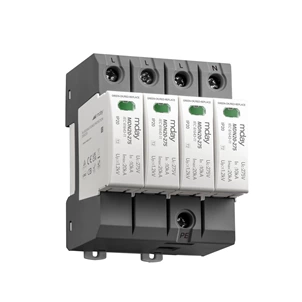The Importance Of Spd In Lightning Protection
According to the provisions of GB50057-94 (2000 edition) of the Lightning Protection Design Code for Buildings, buildings in the LPZ0B, LPZ1, and LPZn+1 lightning protection zones should take measures to prevent induced lightning, static electricity, or surges as appropriate. Induced lightning is a lightning strike caused by the overvoltage and overcurrent induced on the conductor by the strong electromagnetic field changes (electromagnetic pulse induction or electrostatic induction) generated by the lightning current, which poses a huge threat to electrical equipment in buildings, especially low-voltage electronic equipment. The focus of lightning protection for equipment inside buildings is to prevent the invasion of induced lightning. In the protection against induced lightning, surge protectors (SPDs) are indispensable devices. They can respond in time to the overvoltage and overcurrent in various lines, discharge the overcurrent in the line, or clamp the overvoltage on the line, so as to achieve the purpose of protecting electrical equipment.
Static electricity, surges, and induced lightning have the same nature and can be suppressed by surge protectors (SPDs). Another form of static electricity is that due to friction or high-speed operation of electronic equipment, a large amount of static electricity is generated on the human body and electronic equipment. High-voltage discharge is easy to occur between people and objects, and between objects. After discharge, it is very easy to damage delicate electronic equipment; surges are widely generated in daily life, such as turning on and off the power supply, plugging and unplugging the power supply, starting and stopping elevators, electric gates, motors, electric drills, electric welding, damage to electrical equipment and short circuits of wires. In addition, surges often occur inside the power supply system, and may occur in power trunks, branches, generators, power distribution devices, UPS, AC and DC power supplies, and even electrical equipment terminals. Compared with lightning, although the pulse voltage of surges is lower, its pulse width, duration, and intensity are still not small, but it is enough to interfere with and damage electrical equipment.











